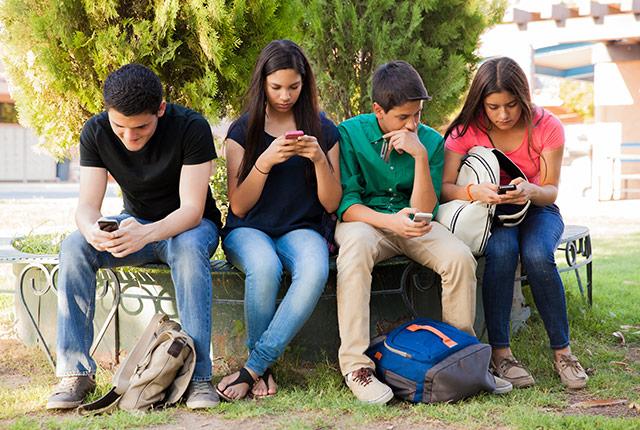
Many schools have lax policies on adolescents’ phone use
Significant portion of U.S. middle and high schools allow unfettered phone access during lunch and recess, researchers find.
“When my son entered middle school, I learned that students in many middle and high schools were allowed to have their phones with them at all times,” said Dr. Pooja Tandon. She's an associate professor of pediatrics at the University of Washington School of Washington and a child health and development expert at Seattle Children’s Research Institute.
“I looked into this a bit more and found that, even in schools where policies limited use during class, cell phones could still be used unrestricted during lunch and recess.”
That finding inspired Tandon’s latest research. She and colleagues at the Center for Child Health, Behavior and Development conducted a survey of public schools serving grades 6-12.
The survey went to over 1,100 principals, representing a sample of U.S. schools. It asked questions about the presence of a cell phone policy for students and staff, and restrictions on phone use. Questions also addressed consequences of policy violation, use of cell phones for curricular activities, and principals’ attitudes toward cell phone policies.
The results of their survey were published today in JAMA Network Open offer the first national snapshot of school cell phone policies. Of the 210 schools responding to the survey, 97% of middle schools and 91% of high schools reported having a cell phone policy for students. Notably, 33% of middle schools and 69% of high schools did not restrict phone use during lunch or recess.
“Schools have a unique opportunity to create predictable screen-free time for children,” Tandon said. “Limiting phone use during the entire school day could significantly decrease their screen exposure.”
Tandon and co-authors advise that, just as schools are critical to helping children and teens meet guidelines for optimal physical activity and nutrition, they should support recommendations on screen time and media use.
“Just like schools are encouraged to help students achieve the recommended 60 minutes per day of physical activity, they have a role to play in helping children limit their screen time exposure,” Tandon said.
– Written by Lindsay Kurs / Seattle Children’s Research Institute. See the longer original version of this item on Seattle Children’s blog.
For details about UW Medicine, please visit https://uwmedicine.org/about.